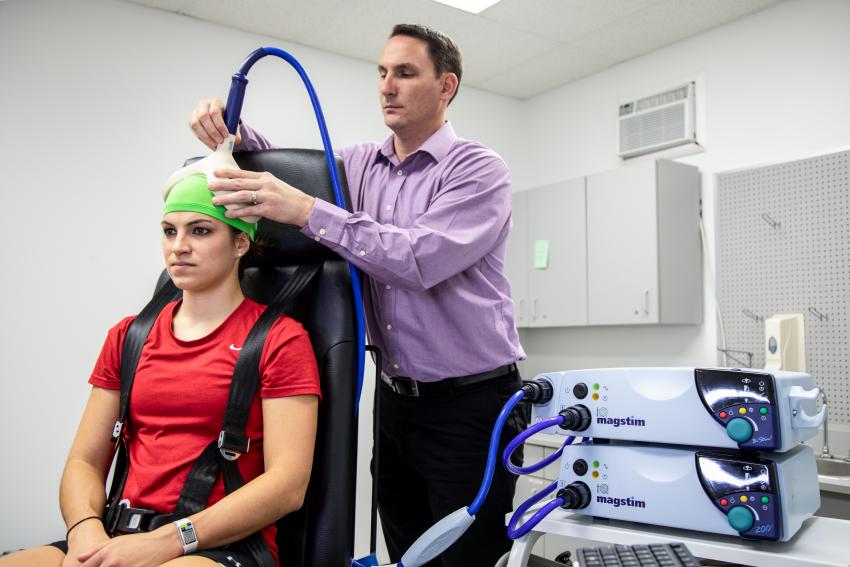Dr. Zarzycki Explores New Treatment for ACL Recovery Through National Grant

Dr. Zarzycki uses transcranial magnetic stimulation to gauge impaired pathways of the nervous system.
After Anterior Cruciate Ligament (ACL) reconstruction surgery, athletes may struggle to return to their previous optimal level of performance, even after physical therapy. Assistant Professor of Physical Therapy Dr. Ryan Zarzycki believes the key to unlocking ACL recovery could be in the nervous system rather than musculoskeletal system.
Through a $37,092 National Center of Neuromodulation for Rehabilitation subward with the Medical University of South Carolina (National Institutes of Health award), Dr. Zarzycki will study how transcranial direct current stimulation (tDCS) can improve nervous system pathways to the quadriceps muscle.
“TDCS is an intervention, so it’s trying to change the excitability in the brain in order to have a positive effect on getting your quadriceps to work again,” said Dr. Zarzycki. “This work that we’re doing is innovative because we’re bringing it to a sports and orthopedic population. These modalities are more popular for patients with injury to the neurological system, such as a patient recovering from a stroke, but now we’re examining if and how tDCS may help athletes with sports injuries.”
Through a system called transcranial magnetic stimulation, physical therapists can see the impaired pathways to the quadriceps muscle. This intervention could be a way to heal those pathways, which Dr. Zarzycki said could be injured either when the nervous system is flooded with information about the tear or in the additional insult of surgery.
“There’s a high chance of reinjury and development of osteoarthritis after ACL reconstruction ,” said Dr. Zarzycki. “We think these problems are related to the inability to get the athlete’s quadriceps performing like they were before surgery.”
Dr. Zarzycki noted that in the U.S. there are approximately 250,000 ACL injuries per year, and an estimated one in four athletes with an ACL tear will reinjure their ligament after recovery. While this grant only looks at short-term impacts of tDCS on the quadriceps muscle, he hopes that this treatment could help athletes reduce their chances of reinjury by improving the strength of the quadriceps muscle and reduce the chances of osteoarthritis.
The study is still recruiting athletes with first time ACL tears who are over the age of 18 years old. If you’d like to know more about the study, contact Dr. Zarzycki at zarzyckir@arcadia.edu.


